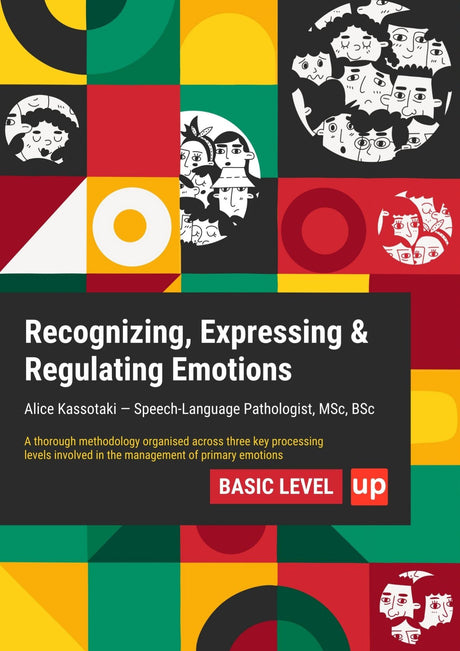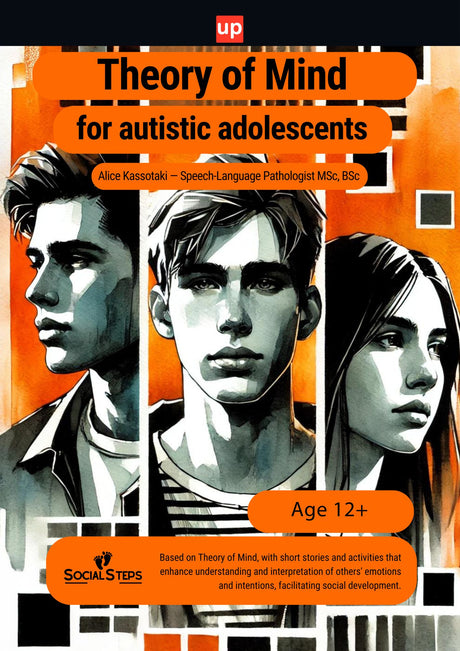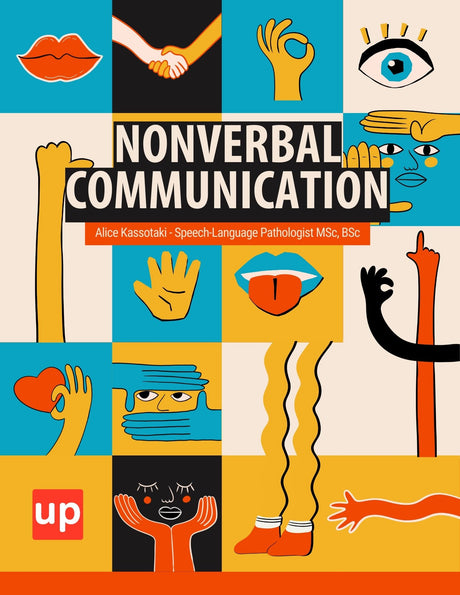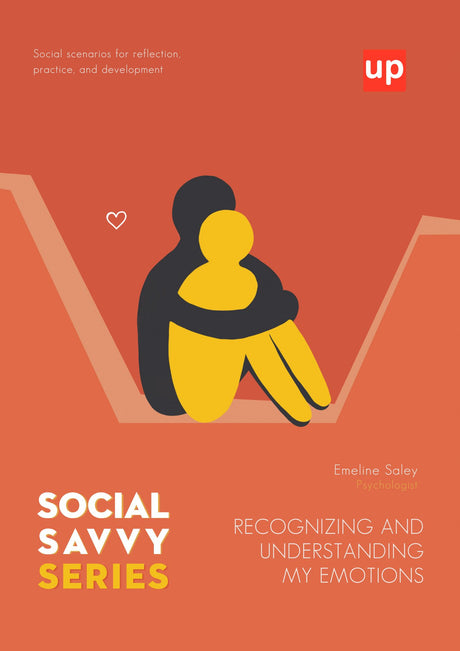Navigating the world often involves a seamless flow of thought into action—picking up a pen, climbing stairs, or catching a ball. For millions, however, this connection is a constant challenge. This is the reality of living with dyspraxia, a condition that affects physical co-ordination. The challenges it presents raise a fundamental question for individuals, families, and employers: Is dyspraxia a disability? This article will explore the complexities of dyspraxia, from its neurological roots and diverse symptoms to its legal classification and the robust support systems available. We will delve into how this condition impacts life from childhood to adulthood and highlight the strategies that empower individuals to not just cope, but thrive.
Key Points
- Dyspraxia, also referred to as Developmental Coordination Disorder (DCD), is a lifelong neurodevelopmental condition that notably impacts motor coordination, affecting both fine and gross motor skills.
- Legally recognized as a disability under laws such as the Equality Act 2010, dyspraxia entitles individuals to protections against discrimination and access to reasonable accommodations in education and the workplace.
- Early diagnosis and tailored interventions, including occupational and physical therapy, are crucial to improving motor skills, boosting confidence, and enabling individuals with dyspraxia to thrive in daily life.
Is Dyspraxia a Disability? Understanding Developmental Coordination Disorder (DCD)

Dyspraxia, known in medical terms as Developmental Coordination Disorder (DCD), is a common condition affecting movement and coordination. It is not a sign of low intelligence or poor muscle strength, but rather a lifelong condition that originates in the brain, impacting how it processes information and directs physical movements. Dyspraxia is considered a neurological disorder, as it involves the way the brain controls motor coordination. Understanding its core nature is the first step toward effective management and support.
Defining Dyspraxia and Developmental Coordination Disorder: Neurodevelopmental Disorders Affecting Movement and More
At its heart, dyspraxia is a neurodevelopmental disorder. It is also considered a chronic condition that persists throughout life, beginning in childhood and often continuing into adulthood. This means it stems from differences in how the brain develops and functions. The brain struggles to plan, sequence, and execute unfamiliar motor tasks. This can affect everything from simple physical movements to more complex activities requiring a series of coordinated actions. While the exact causes are unknown, potential risk factors include premature birth, low birth weight, and a family history of the condition. In some cases, coordination difficulties can also arise from an acquired brain injury. Research suggests that dyspraxia is surprisingly common; research from York St John University indicates it affects around two children in every class of 30, highlighting its prevalence in educational settings.
Dispelling Misconceptions: Dyspraxia vs. Other Conditions
Dyspraxia is often confused with clumsiness, but it is far more complex. Historically, it was referred to as 'clumsy child syndrome,' a term once used to describe children with motor coordination difficulties. It is also distinct from, though frequently co-occurring with, other neurodevelopmental disorders. For example, a significant overlap exists with attention deficit hyperactivity disorder (ADHD); research indicates that DCD co-occurs with ADHD in 30% to 50% of cases. Similarly, individuals with dyspraxia may also have autism spectrum disorder (ASD) or specific learning difficulties like dyslexia. Unlike a learning disability, which directly impacts cognitive learning processes, dyspraxia primarily affects the motor skills needed to perform academic tasks, creating significant learning difficulties.
A Lifelong Journey: Understanding the Persistent Nature of Dyspraxia
While interventions can significantly improve an individual’s abilities and coping strategies, dyspraxia is a lifelong condition. The specific challenges may evolve, but the underlying neurological differences persist. Symptoms of dyspraxia often become apparent from an early age and continue into adulthood. A child who struggles with tying shoelaces may grow into an adult who finds driving or organizing a project at work difficult. Recognizing its persistent nature is crucial for ensuring continuous support and understanding throughout an individual’s life, from the classroom to the workplace.
Unpacking the Symptoms: Beyond Clumsiness

The outward signs of dyspraxia are varied and manifest differently in each person. While often characterized as simple clumsiness, the symptoms represent a profound disconnect between intention and action, affecting both large-scale and small-scale physical activities. These symptoms are often referred to as motor difficulties, highlighting the challenges with coordination and movement experienced by individuals with dyspraxia.
Early Signs and Challenges in Childhood
In early childhood, dyspraxia often becomes apparent through delayed motor milestones. A child might be late to crawl, walk, or speak. As they grow, they may struggle with gross motor skills, exhibiting poor balance, difficulty running, jumping, or catching a ball. Dyspraxia affects a significant percentage of school aged children, making early identification and intervention during this developmental stage crucial for supporting their academic and social development. Fine motor skills are also a significant area of challenge, leading to problems with holding a pencil, using scissors, buttoning a coat, or assembling puzzles. This poor hand-eye coordination can make playground games and classroom activities equally frustrating.
Dyspraxia in Adolescence and Adulthood
As individuals enter adolescence and adulthood, the challenges of dyspraxia evolve. While some basic motor tasks may have improved with practice, difficulties with more complex sequencing and planning often become more prominent. Older children with dyspraxia may face increased independence and social challenges, as they are expected to manage more responsibilities and navigate more complex social situations. Teenagers may struggle with the physical co-ordination required for sports, learning to drive, or the organizational skills needed for complex homework assignments. In adulthood, these movement difficulties can impact workplace efficiency, household chores, and even social interactions, which often involve unspoken physical cues and spatial awareness.
The Broader Impact: Cognitive, Perceptual, and Sensory Aspects
Dyspraxia’s impact extends beyond motor skills. Many individuals also experience challenges with perception, memory, and processing. This can include difficulty judging speed or distance, poor spatial awareness, and trouble remembering and following multi-step instructions. Furthermore, a close link exists with sensory processing disorder (SPD), where individuals may be over- or under-sensitive to stimuli like touch, sound, or light. Sensory integration plays a key role in understanding and treating these movement and sensory challenges in dyspraxia, as difficulties in sensory processing and integration can exacerbate movement difficulties and contribute to feelings of anxiety and stress.
Is Dyspraxia a Disability? A Deeper Dive into Classification and Identity
The question of whether dyspraxia is a disability is not just about a label; it’s about recognition, rights, and access to support. The answer depends on the lens through which it is viewed—legal, medical, or social. Under disability law, particularly the Equality Act 2010, dyspraxia can be classified as a disability, which provides individuals with legal protections and the right to reasonable accommodations.
Legal and Medical Perspectives: When Dyspraxia Meets Definition
From a legal standpoint, particularly in the United Kingdom, the answer is clear. Dyspraxia/DCD is recognized as a disability under the Equality Act 2010. Under this law, dyspraxia is considered a protected disability, meaning individuals with dyspraxia are entitled to legal protections against discrimination and have the right to reasonable adjustments to support their needs. This legislation defines a disability as a physical or mental impairment that has a “substantial” and “long-term” negative effect on your ability to do normal daily activities. Given that dyspraxia is a lifelong condition that significantly impacts motor skills required for tasks like writing, driving, and self-care, it firmly meets these diagnostic criteria. This legal recognition is vital for ensuring individuals are protected from discrimination and are entitled to reasonable adjustments in education and employment.
The Neurodiversity Lens: Embracing Difference, Not Deficit
The neurodiversity movement offers another perspective. It frames conditions like dyspraxia, autism spectrum disorder, and ADHD not as deficits to be cured, but as natural variations in the human brain. In contrast, traditional frameworks classify dyspraxia as one of several mental disorders in official diagnostic manuals, such as the DSM-5 and WHO classifications, emphasizing its recognition as a mental or neurodevelopmental disorder. From the neurodiversity viewpoint, however, the “disability” arises not from the individual’s neurology but from the friction between their way of functioning and a world designed for the neurotypical majority. This lens encourages a shift from focusing solely on challenges to also recognizing the unique strengths and perspectives that neurodivergent individuals possess.
Why Classification Matters: Accessing Rights and Support
Classifying dyspraxia as a disability is functionally critical. This recognition unlocks access to essential services and accommodations. Dyspraxia can significantly affect organisation abilities, making it challenging for individuals to coordinate tasks, manage daily routines, and execute actions efficiently. In schools, it is the basis for creating an Individualized Education Plan (IEP) or receiving support through special education programs. In the workplace, it mandates that employers provide reasonable adjustments, such as assistive technology or modified duties, to enable an employee to perform their job effectively. Without this classification, many individuals would be left to navigate their challenges without the structural support needed to achieve their full potential.
The Path to Diagnosis: Identifying Dyspraxia

A formal diagnosis is the gateway to understanding and support. It provides an official explanation for lifelong struggles and paves the way for targeted interventions. The diagnostic process is comprehensive and typically involves a team of professionals. Getting dyspraxia diagnosed usually requires an interdisciplinary evaluation, where specialists use various assessment tests to confirm the condition in children. This process is crucial for accessing appropriate support and resources.
Who Diagnoses Dyspraxia? A Multidisciplinary Approach
Diagnosing dyspraxia is not the responsibility of a single professional. It often requires a multidisciplinary team, which may include a pediatrician, a neurologist, an educational psychologist, and crucially, an occupational therapist or physical therapist. The involvement of different healthcare professionals, such as pediatric occupational therapists and physiotherapists, highlights the collaborative approach taken by healthcare professionals in the diagnostic process. These experts work together to build a complete picture of an individual’s challenges, ruling out other potential causes for their movement difficulties, such as a brain injury or other neurological conditions.
The Diagnostic Process: A Comprehensive Motor Skills Assessment
The core of the diagnosis is a thorough movement assessment. A professional, often an occupational therapist, will use standardized tests to evaluate both fine and gross motor skills. The evaluation focuses on identifying coordinated motor skills difficulties and significant delay in acquiring coordinated motor skills. This involves observing the individual perform a series of motor tasks, such as balancing, hopping, throwing and catching a ball, and manipulating small objects. Motor function and motor problems are key areas of focus during the assessment. The assessment compares their performance against the expected developmental norms for their age. The diagnostic criteria require that these coordination difficulties significantly interfere with academic achievement or activities of daily living. The Diagnostic and Statistical Manual (DSM-5), published by the American Psychiatric Association, is used to classify developmental coordination disorder. The statistical manual highlights difficulties in acquiring new motor skills as a core feature.
Empowering Support and Intervention Strategies
A diagnosis of dyspraxia is not an endpoint but a starting point for a journey of empowerment. Early support and intervention for children with dyspraxia are crucial to help them overcome challenges, improve outcomes, and boost self-esteem. With the right strategies and support, individuals can develop their skills, build confidence, and find effective ways to navigate their daily lives.
Professional Therapies: Tailored Interventions for Dyspraxia
Therapy is a cornerstone of dyspraxia support. An occupational therapist plays a pivotal role in helping individuals manage daily life. Occupational therapy focuses on breaking down challenging activities into manageable steps, developing coping strategies, and improving the fine motor skills needed for writing and self-care. They may recommend aids like special grips for pens or specialized keyboards. Physical therapy, on the other hand, is often recommended to improve gross motor skills. Physical therapists design exercises to build muscle strength, enhance balance, and improve overall physical co-ordination. Therapy aims to help individuals overcome physical difficulties and improve their ability to perform physical tasks in everyday life.
Educational Support and Accommodations
In an educational setting, support is crucial. Recognizing dyspraxia as a condition that causes significant learning difficulties is the first step. Accommodations may include allowing extra time on tests, providing a laptop for note-taking to bypass handwriting challenges, and offering materials in different formats. These supports are specifically designed to help students complete tasks that may otherwise be challenging due to dyspraxia. Special education professionals can work with teachers to adapt curricula and teaching methods to better suit the student’s learning style, ensuring they are not left behind due to their motor-based challenges.
Strategies for Adults: Workplace, Daily Life, and Self-Advocacy
Adults with dyspraxia can benefit from strategic workplace accommodations. This might involve software for mind-mapping and project management, a quieter workspace to minimize sensory distractions, or clear, written instructions instead of verbal ones. Accommodations can also help adults with dyspraxia manage everyday tasks more effectively, supporting them in daily routines and responsibilities. The high unemployment rates for neurodivergent adults, estimated to be as high as 30-40%, underscore the importance of such support. Self-advocacy is a key skill, empowering adults to communicate their needs to employers, partners, and friends, fostering a more understanding and accommodating environment.
Living and Thriving with Dyspraxia: Strengths and Resilience

While the focus is often on the challenges, it’s equally important to recognize the unique strengths and resilience of individuals with dyspraxia. Some people are more severely affected by dyspraxia and may require more intensive support to manage daily life. By shifting the perspective, we can see a fuller, more capable picture.
Beyond the Challenges: Celebrating Unique Strengths
People with dyspraxia often develop remarkable alternative skills. Having to consciously navigate a world that is not built for them can foster incredible problem-solving abilities, determination, and creativity. Many are described as strategic thinkers, seeing the bigger picture where others see only details. They may be highly empathetic, creative, and driven, bringing a unique and valuable perspective to any team or community.
Building a Supportive Community and Resources
No one should have to navigate dyspraxia alone. Connecting with others who share similar experiences can be incredibly validating and empowering. Organizations like the Dyspraxia Foundation in the United Kingdom provide invaluable information, resources, and a sense of community for individuals and their families. These networks offer practical advice and emotional support, reminding people that they are part of a wider community that understands and shares their journey.
Conclusion
So, is dyspraxia a disability? Legally and functionally, yes. It presents substantial, lifelong challenges to an individual's ability to perform everyday motor tasks. But this classification is not a label of limitation; it is a key to unlocking support, understanding, and opportunity. By viewing dyspraxia through the dual lenses of a legally recognized disability and a form of neurodiversity, we can both provide necessary accommodations and celebrate unique strengths. The path forward involves continued advocacy, early diagnosis, and access to tailored therapies from professionals like occupational and physical therapists. By fostering an environment of acceptance and providing robust support systems in schools and workplaces, we can empower individuals with dyspraxia to overcome barriers and fully realize their potential.
Frequently Asked Questions
Is dyspraxia considered a disability?
Yes, dyspraxia is considered a disability under laws such as the Equality Act 2010. It is recognized as a physical or mental impairment that has a substantial and long-term negative effect on an individual's ability to carry out everyday activities.
What is the difference between dyspraxia and developmental coordination disorder?
Dyspraxia is another term for developmental coordination disorder (DCD). Both terms describe the same neurodevelopmental condition characterized by difficulties with motor coordination.
Can dyspraxia be diagnosed in adults?
Yes, while dyspraxia begins in childhood, it can be diagnosed in adults, especially if it was not identified earlier. Adults may experience challenges with motor skills, organization, and coordination.
What causes dyspraxia?
The exact cause of dyspraxia is unknown, but risk factors include premature birth, low birth weight, family history, and possibly prenatal exposure to alcohol or other environmental factors.
How is dyspraxia diagnosed?
Diagnosis typically involves a multidisciplinary assessment by healthcare professionals such as pediatricians, occupational therapists, and physical therapists. They evaluate motor skills and rule out other neurological conditions.
What treatments are available for dyspraxia?
There is no cure, but interventions like occupational therapy and physical therapy can improve motor skills, coordination, and daily functioning. Tailored support helps individuals manage challenges effectively.
How does dyspraxia affect learning?
Dyspraxia primarily affects motor skills, which can impact tasks like handwriting and coordination in physical activities. It can create significant learning difficulties but does not affect intelligence.
Is dyspraxia a lifelong condition?
Yes, dyspraxia is a chronic condition that typically persists throughout life. However, with appropriate support and strategies, individuals can improve their skills and adapt to challenges.
Can people with dyspraxia work successfully?
Absolutely. Many people with dyspraxia thrive in the workplace, especially when reasonable accommodations are provided. Supportive environments and understanding employers can make a significant difference.
Where can I find support for dyspraxia?
Organizations such as the Dyspraxia Foundation provide resources, information, and community support for individuals and families affected by dyspraxia.
Original content from the Upbility writing team. Reproducing this article, in whole or in part, without credit to the publisher is prohibited.
References
- American Psychiatric Association. (2013). Diagnostic and Statistical Manual of Mental Disorders (5th ed.). Arlington, VA: American Psychiatric Publishing.
- Dyspraxia Foundation. (n.d.). What is Dyspraxia? Retrieved from https://dyspraxiafoundation.org.uk/
- Rosenblum, S., & Josman, N. (2008). The relationship between handwriting performance and organizational ability among children with developmental coordination disorder. Research in Developmental Disabilities, 29(6), 567-576.
- Zwicker, J. G., & Harris, S. R. (2009). A reflection on motor learning and developmental coordination disorder. Developmental Medicine & Child Neurology, 51(9), 695-700.
- World Health Organization. (2018). International Classification of Diseases 11th Revision (ICD-11). Geneva: WHO.
- Wilson, P. H., Ruddock, S., Smits-Engelsman, B., Polatajko, H., & Blank, R. (2013). Understanding performance deficits in developmental coordination disorder: a meta-analysis of recent research. Developmental Medicine & Child Neurology, 55(3), 217-228.
- York St John University. (2020). Research on Dyspraxia prevalence in schools. Retrieved from https://www.yorksj.ac.uk/
- Equality Act 2010, UK. Retrieved from https://www.legislation.gov.uk/ukpga/2010/15/contents
- American Occupational Therapy Association. (2014). Occupational therapy’s role with children and youth with developmental coordination disorder. American Journal of Occupational Therapy, 68(2), S1-S11.









